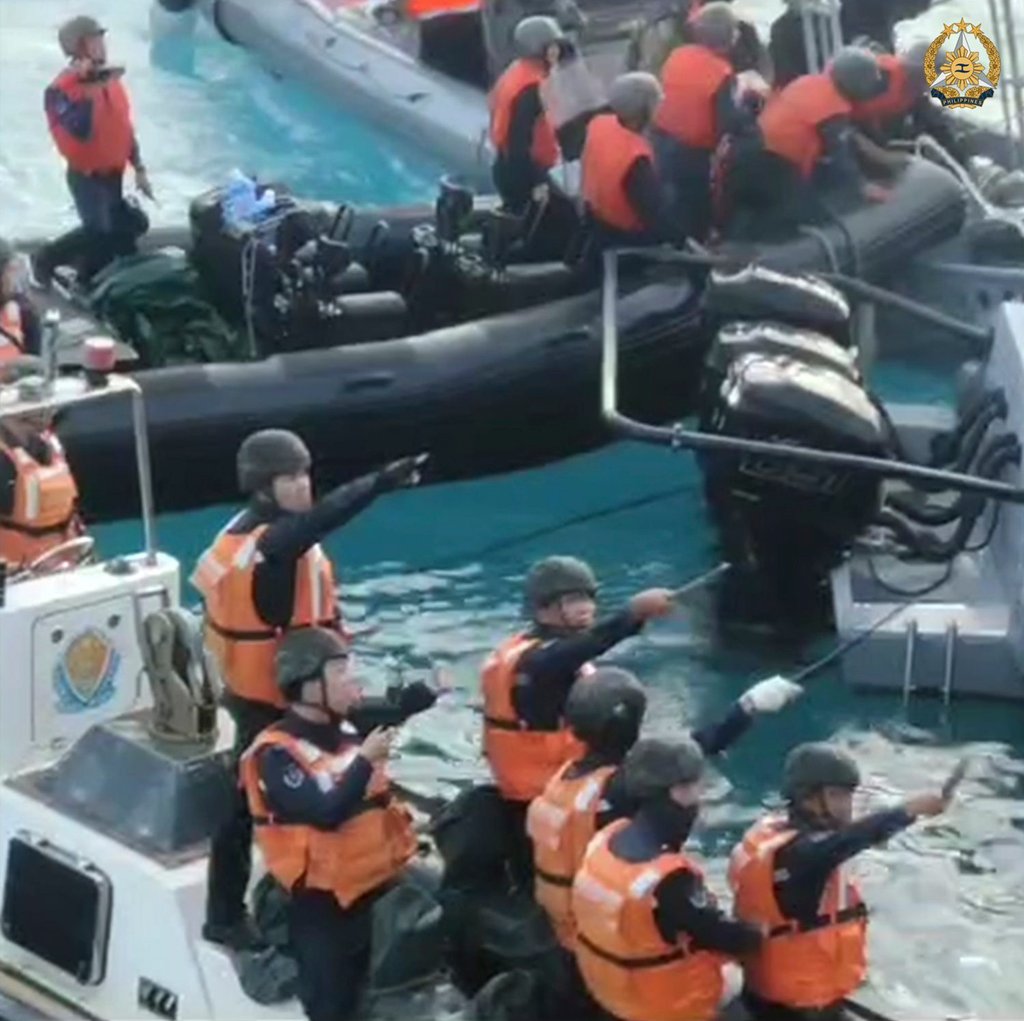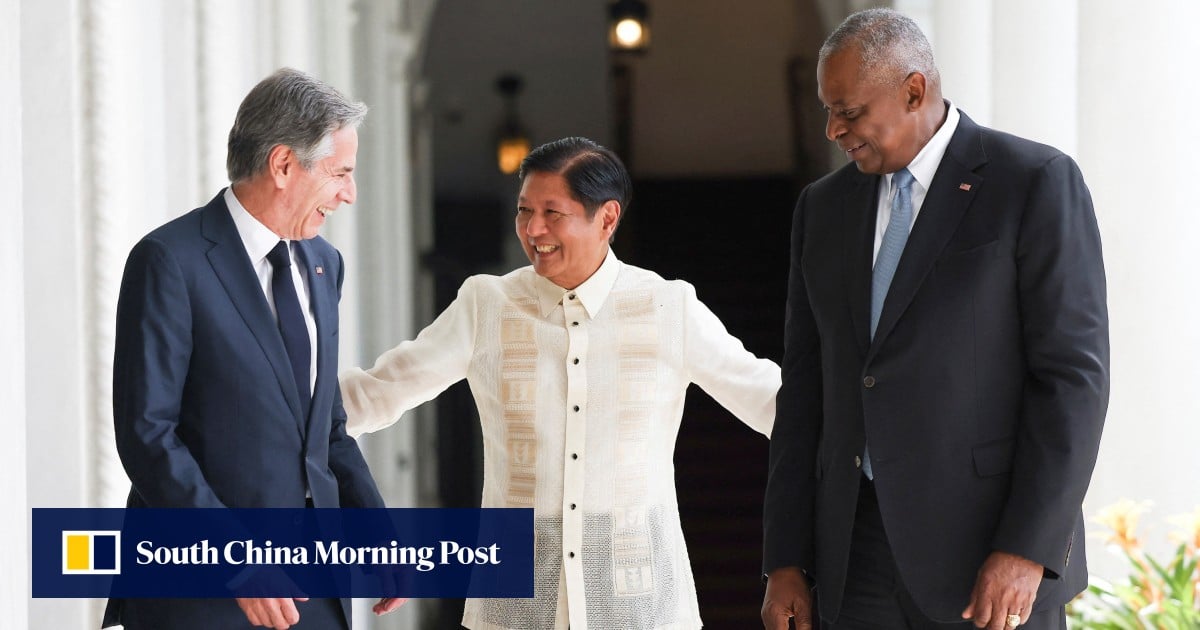“We’re now allocating an additional US$500 million in foreign military financing to the Philippines to boost security collaboration with our oldest treaty ally in this region,” Blinken told a joint news conference.

Blinken called it as a “once in a generation investment” to help modernise the Philippine military and coastguard.
Secretary Austin said, “This level of funding is unprecedented and it sends a clear message of support for the Philippines from the Biden-Harris administration, the US Congress and the American people.”
The US officials said about US$125 million would be allocated to the construction and improvement of Philippine military bases that Manila has allowed US troops to be stationed at under the two countries’ Enhanced Defence Cooperation Agreement.
Edmund Tayao, president and CEO of the Political Economic Elemental Researchers and Strategists think tank, told This Week in Asia that Blinken and Austin’s visit represented concrete proof of Washington’s commitment to Manila as a security partner.
“This visit is only the latest of what has been a series of regular high profile visits by US officials. This is a very strong statement of support which could only be topped by the US coming to our aid when the frightening possibility of aggression actually happens,” Edmund Tayao, president and CEO of the Political Economic Elemental Researchers and Strategists think tank, told This Week in Asia.
However, Tayao warned that the increased funding announcement could potentially escalate tensions with Beijing even further in the South China Sea.
“China for sure is carefully watching and calculating every move. At the very least, we can expect a further exhaustion of options that are becoming closer and closer to the use of violence,” Tayao said.
Manila and Beijing have been locked in an increasingly contentious territorial row in the South China Sea for several months, with the latest skirmish on June 17 between the Philippine navy and Chinese coastguard taking place at the disputed Second Thomas Shoal.

The Philippines and the United States are bound by their long-standing 1951 Mutual Defence Treaty (MDT), which calls on both sides to help each other in times of aggression by an external power.
At Tuesday’s press briefing, Blinken reiterated Washington’s commitment to upholding the treaty and made clear that it covered a wide range of scenarios related to Manila’s current conflict with Beijing.
“We stand by our ironclad defence alliance with the Philippines under the MDT. That extends to armed attacks on the AFP (Armed Forces of the Philippines), public vessels or aircraft, including the coastguard, anywhere in the Pacific, including the South China Sea,” Blinken said.
Blinken told Marcos this year’s ministerial dialogue were “historic” since it is the first time that the Philippines is hosting them.
“It’s, I think, really evidence of a steady drumbeat of very high-level engagements between our countries that are covering the full range of issues and opportunities that bring us together, not only security, but also economic, and we’re truly grateful for this partnership,” he added.
Matteo Piasentini, a security analyst from the China and Indo-Pacific desk at Geopolitica, an Italian think tank, said Blinken and Austin’s visit was important to assure the Philippines that the US was committed to their partnership for reasons beyond countering Beijing.
“South China Sea aside, the Philippines also requires the US to help strengthen Manila’s economy and energy security. There is also an intelligence-sharing agreement at stake that needs to be discussed at the highest level,” he told This Week in Asia.
Blinken and Austin’s visit to Manila is part of an 11-day trip to Asia, with other stops on the itinerary including Japan, Singapore and Vietnam – all countries that have increased security ties with the Philippines in recent months.
Some analysts have speculated that the US has been orchestrating some of these security arrangements behind the scenes in order to create a coalition, centred around the Philippines, that can counter China’s influence in the region. Others have suggested that Manila is seeking out these alliances because it was uncertain about Washington’s commitment to their alliance.
Piasentini said that while other security arrangements may be a useful safeguard, it makes sense for Manila to double down as much as possible on US military equipment and financing as they already have an established relationship and Manila needs to increase its deterrence capabilities now.
“Waiting for bids from other countries may be beneficial long term, but in the short term, US assistance is the best Manila has,” Piasentini said.


